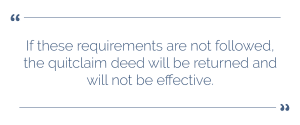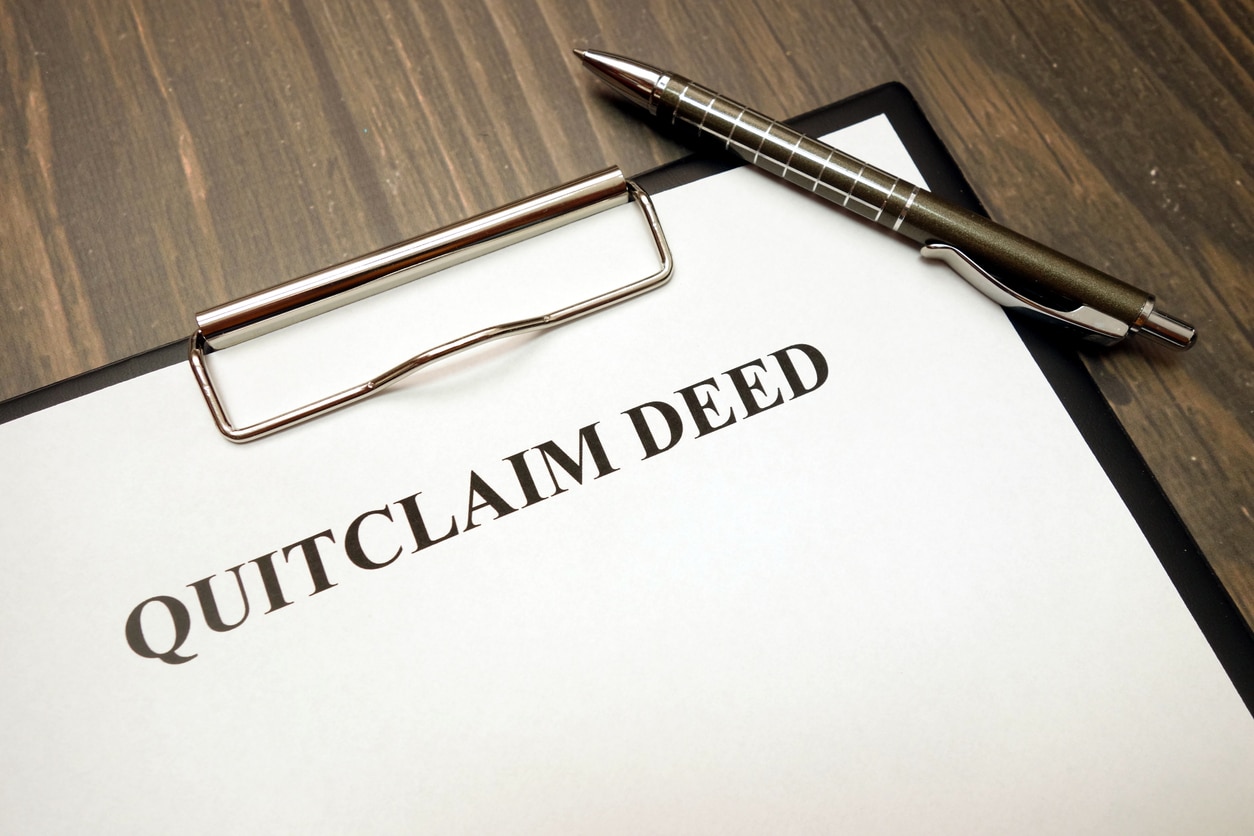There may be a point in time where you may be wondering how to file a quit claim deed. This article provides a comprehensive guide on how to file a quitclaim deed, particularly in Los Angeles County California. It begins by explaining what a quitclaim deed is, highlighting that it only transfers the same interest that the grantor had at the time the deed was signed. The article then outlines the requirements for preparing and filing a quitclaim deed, such as the need for original signatures, a legible notary seal, and a completed Preliminary Change of Ownership Report. Finally, it explains the process of filing a quitclaim deed, which involves notarization and recording at the Local County Recorder’s office.
What is a Quitclaim Deed?
Like all deeds related to real property, quitclaim deeds are documents used to convey some interest in property from one person to another. Quitclaim deeds typically include the words “assign”, “release”, “quitclaim”, or “transfer” or “right, title, and interest.
A key aspect distinguishing quitclaim deeds from other types of deeds is that it only transfers the same interest that the grantor of the quitclaim deed had at the time the deed was signed. Unlike a grant deed, which presumably transfers all rights in the property to the grantee, a quitclaim deed only transfers what rights and interests the grantor had at the time. Thus, a quitclaim deed is only as good as the interest the owner. For example, if the owner has no interest, then a quitclaim deed conveys nothing.

Requirements for Preparing and Filing a Quitclaim Deed
Other important requirements for preparing and filing a quitclaim deed in Los Angeles County include the following:
- The property at issue for the quitclaim deed must be located in Los Angeles County. (C.C. § 1169)
- Signatures must be original. (G.C. § 27201b, G.C. § 27279, Evidence Code § 1530)
- The name of the party requesting the recording and a name and address where the document can be returned must be included. (G.C. § 27361.6)
- The notary seal must be legible for a microfilm reproduction. (G.C. § 8207)
- When recording documents affecting a change in the ownership of real property, include a completed Preliminary Change of Ownership Report (from the County Assessor’s Office as well as the County Clerk-Recorder’s Office.)
- Documents must be clearly legible in order to produce a readable photographic record. (Gov. 27361.7)
- Recorder’s also specifies specific page size and margin requirements.
How to File a Quitclaim Deed?
After preparing the necessary quitclaim deed document according to the above requirements, in California, the quitclaim deed also needs to be notarized pursuant to the California Government Code, which specifies that documents recorded in the County Recorder’s office, unless exempt by law, must be properly acknowledged. (California Government Code §§ 27201, 27289, 27285, 27287, 27288; C.C. § 1189.)
After proper notarization, the quitclaim deed can be recorded at the Local County Recorder’s office, typically either in person or by mail when the appropriate fees are included.
Going back to the example in Los Angeles County, a quitclaim deed can be mailed to the Registrar-Recorder/County Clerk Document Analysis and Recording Section along with the relevant fees. If these requirements are not followed, the quitclaim deed will be returned and will not be effective.



